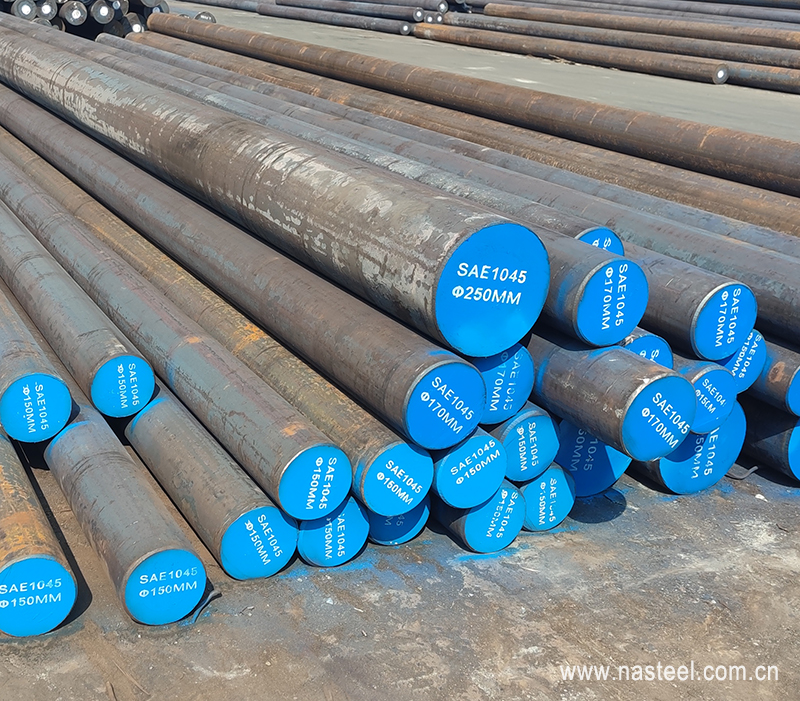Why is it not suitable to use carburizing and quenching heat treatment method for AISI1045 round steel?

From the perspective of metallurgy and practice, we discuss the following in depth:
❌ Why Carburizing and Quenching Is Not Suitable for AISI 1045 Round Steel
🔍 1. Carbon Content Is Already Too High for Carburizing
-
AISI 1045 has ~0.45% carbon, which is medium-carbon steel.
-
Carburizing is designed for low-carbon steels (typically ≤0.25% C), like AISI 1018 or 1020.
-
Carburizing adds carbon to the surface to enable hardening — but 1045 already has enough carbon throughout to harden by itself.
📌 Problem: Carburizing 1045 can push surface carbon content too high (e.g., >0.9%), which leads to:
-
Brittle martensite on the surface
-
Cracking during quenching
-
Reduced toughness
🔍 2. No Benefit from Case-Hardening Concept
Carburizing is meant to create:
-
A hard outer shell (high-carbon martensite)
-
A tough inner core (low-carbon ferrite/pearlite or tempered martensite)
🔧 But 1045 already hardens through its thickness when quenched. So carburizing doesn’t give you a hard-soft gradient — instead, you get:
-
A hard shell
-
A less-tough core than expected
-
Possible distortion or cracking in round parts due to internal stress mismatch
🔍 3. Increased Risk of Quench Cracking
After carburizing, the high-carbon surface of 1045 will form very hard, brittle martensite upon quenching.
Combined with:
-
Round bar geometry
-
Internal stresses from rapid cooling
-
Hardening of the core as well
→ Results in a high risk of surface or subsurface cracks.
🔍 4. Waste of Time and Cost
Since 1045 can be directly quenched and tempered, carburizing adds:
-
Extra processing time (carburizing takes hours)
-
Higher cost
-
No performance improvement — and may even make the part worse
✅ The Right Way to Treat 1045 Round Steel
Use quenching and tempering:
-
Austenitize: 820–850°C
-
Quench: Oil (preferred) or water
-
Temper: 400–600°C depending on desired properties
This gives you:
-
Uniform martensitic structure
-
Hardness up to ~HRC 50
-
Excellent strength, toughness, and fatigue resistance
🔄 Summary Table
| Treatment Method | Suitability | Reason |
|---|---|---|
| Carburizing + Quenching | ❌ No | Carbon too high → cracking, embrittlement |
| Quenching + Tempering | ✅ Yes | Efficient, safe, delivers excellent properties |
| Induction Hardening (Surface) | ✅ Yes | Good for surface hardening with tough core |